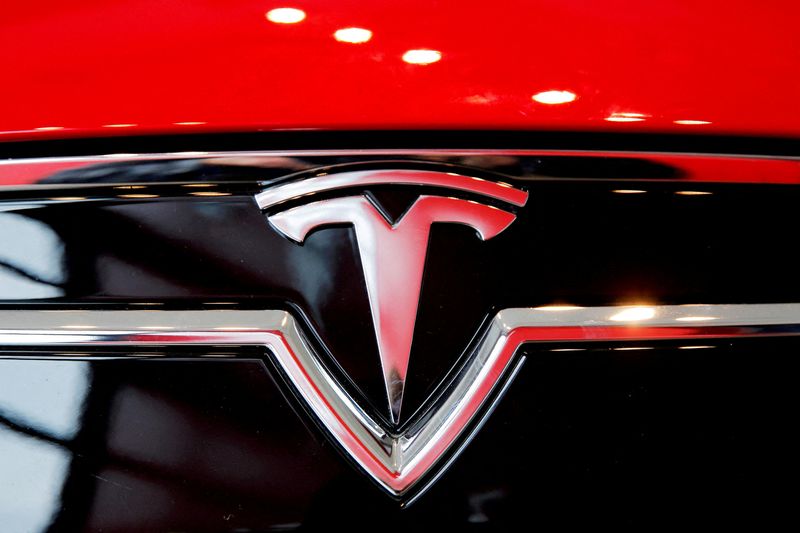By David Shepardson
WASHINGTON (Reuters) -Tesla urged the Biden administration to finalize significantly stricter heavy-duty emissions limits than proposed in April, arguing larger vehicles were being electrified much faster than envisioned and would lead to bigger pollution cuts.
The electric vehicle (EV) manufacturer said in comments made public on Tuesday that the Environmental Protection Agency's (EPA) proposal did not go far enough, should be as stringent as California's truck emissions regulations and eliminate credits that make it easier to comply.
EPA should "actively embrace a more rapid transition to (battery electric vehicles)" adding "the time for doing so is now," Tesla (NASDAQ:TSLA) said.
The EPA's rule, if not tightened, would fail to put the heavy-duty sector on a path to full electrification or sufficiently reduce U.S. emissions and therefore "would not meet the legal benchmark of the Clean Air Act to protect the nation’s public health and welfare," the company added.
EPA said on Tuesday it plans to post a response to all comments received. The comment period closed on Friday.
Under the proposal in April, the EPA estimated 50% of new vocational vehicles like buses and garbage trucks could be EVs by 2032, along with 35% of new short-haul freight tractors and 25% of new long-haul freight tractors. Medium-duty vehicle rules are projected to cut emissions by 44% over 2026 requirements.
The EPA says its heavy duty proposal would result in net benefits ranging from $180 billion to $320 billion and is projected to avoid 1.8 billion tons of CO2 through 2055.
Tesla cited its Tesla Semi production in making the case for tougher emissions rules, noting it anticipates production levels of a Class 8 Day Cab tractor at 50,000 per year with significant production volumes beginning in late 2024.
In December Tesla initiated deliveries of its Semi. Analysts say the EV maker is currently producing only a small number of Semis.
Tesla CEO Elon Musk said earlier this month the company does not expect to produce its Semi electric trucks in large volume until sometime next year because of the need to ensure a sufficient battery supply.
Tesla submitted its Semi heavy-duty production plans through 2030 to EPA but did not make them public.

"Reaching the 50,000 annual production level would amount to 20% of all annual sales in (model year) 2027. This means Tesla’s production goal alone would far exceed the 5% EV sales deployment EPA anticipates in 2027," Tesla wrote, noting other companies are planning to build heavy-duty EVs.
The American Trucking Associations, an industry group, said in comments on Tuesday the EPA proposal is too aggressive and "relies on technology that is at early-stage and lacks the real-world demonstrated maturity compared to proven internal combustion engine vehicle (ICEV) technologies."